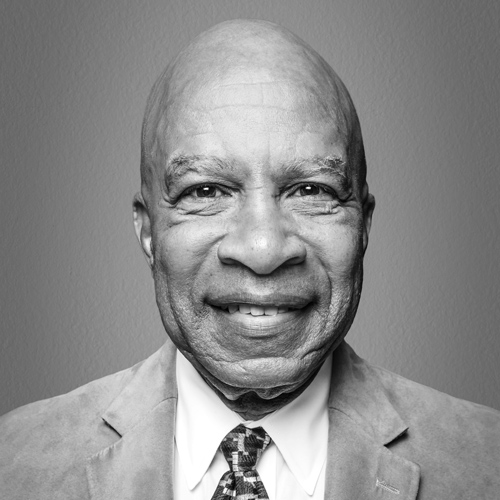When Jeffrey Stevens joined Thomas Jefferson University and Jefferson Health in Philadelphia, he knew he’d need his two decades of HR experience and his abiding love of technology. Over his first eighteen months, his plans became much more complex, as the institution continued to expand through clinical and academic mergers in the Philadelphia region to become Jefferson. The new organization now includes eleven hospitals, two universities, and thirty thousand team members. The growth spurt meant all of HR had to integrate into a single enterprise function, and the disparate and separate HR systems needed to be merged. For Stevens, Jefferson’s executive vice president and chief human resources officer, that meant the fun was just beginning.
Consolidating HR Systems
After the mergers, Stevens would consolidate the HR systems of its five main divisions to essentially create a single employee record. Until then, there had been no common language across department names, jobs, job paths, reporting relationships, or titling, among other structural references that needed to be rebuilt for the new Jefferson. Additionally, HR systems are notoriously disengaging and often seen as providing somewhat limited value to end-users, managers, and employees. That had to change, and the technology system would have to be built not just for the present, but for a rapidly changing future.

Thanks to his years of HR tech experience, Stevens understood how each of the separate systems were functional but inadequate for the goal of changing such a large workforce. The new HR system would have to offer the tools and insights needed for an organization to manage its workforce. By creating a culture where performance and learning are one’s credentials and become the inputs into development plans, the possibilities are endless in terms of growing talent throughout Jefferson.
An HR Vision
Stevens’s vision of a perfect HR ecosystem is every team member engaging in learning and collaboration opportunities. “Our future is about connective or collaborative intelligence,” he explains. “Encouraging employees to build their professional profiles will help people find others like them and connect.” Stevens envisions that the system will connect people to spread best practice ideas, bring teams together, and facilitate discovery, innovation, and even organizational initiatives such as wellness. RedBrick, Jefferson’s partner in wellness, has proven successful by doing what Stevens hopes other system functions will do—connecting people and giving them access to information and engagement.
One of the greatest opportunities the system will bring to Jefferson is the ability to rethink its performance program. HR professionals are now thinking seriously about major changes to performance management. Conversations are underway about working without employee rankings, continuous feedback and 360 reviews, recognition badges, and the importance of goals. Stevens vision involves shaping technology through thoughtful design and creating the type of online engagement that these new performance ideas require.
Design will be a major part of the new Jefferson system. “We have to design technology in a way that people like: think Facebook, LinkedIn, Instagram, and Snapchat,” Stevens says. “We can give employees precisely what they want and need in terms of personal data, tracking education and career objectives, and more.” Additionally, the system will be able to engage every Jefferson team member with content and messaging appropriate to each person. As a result, the system will help declutter inboxes and get everyone focused on what they need to do to make Jefferson exceptional.
Stevens began the project by migrating employees from other systems onto Oracle’s Peoplesoft platform. This now serves as the core human resources management system. For the talent management functionality that Stevens envisioned, he turned to SAP’s SuccessFactors, specifically their performance, learning, and Jam modules. This software offers the front-end design and collaboration features.
Improving Access for Employees
The resulting overarching Jefferson “experience” will take users into a beautiful portal that includes their profile, their job and career planning pages, performance tools, and collaboration communities, along with internal and external organizational news and data. Stevens expects that the system will engage its users just like other forms of social media technology do. “Like Facebook, the more our people engage with the program, the more the program will reflect the realities of Jefferson and its commitment to excellence,” Stevens says.
A system like this has capabilities beyond improving some traditional HR activities. “I see a group of heart surgeons, for example, remotely collaborating and challenging each other through a Jam portal while a procedure plays on screen,” Stevens says. He sees the program’s capacity to turn Jefferson’s educational mission and capabilities over to its majority-clinical workforce. Jefferson’s College of Population Health and its Institute for Emerging Health Professions are just two examples of the rich resources for instruction and content any major clinical system needs. “Jefferson is already showing the combined strength of its parts,” he says.
So far, Stevens’s two biggest challenges have been socializing what is essentially a visual message (how an organization can function at its peak using technology), and of course the larger goal of creating a common culture that changes the frame of reference for virtually every team member. Stevens has shown that he is already hard at work and expects issues and challenges to become the focus of further innovation—HR as a continuous improvement laboratory, aided by a first-class system.
This year is the beginning of a launch that will last a generation or more and take Jefferson to a new level of performance and engagement. “Jefferson essentially gave me a blank canvas, and I’m working to build a future-ready workforce,” Stevens says. ”I’ve been thinking about this my entire career. Having the opportunity to engage across a system as large and complex as Jefferson has been a thrill.”
Congratulations to Jeffrey Stevens and the Thomas Jefferson University and Jefferson Health teams. Aetna applauds your contributions to creating better healthcare for the communities you serve and is proud to be a key partner in delivering the innovative healthcare solutions your employees and their families depend on each day.
Aon is proud to partner with Thomas Jefferson University & Jefferson Health in the areas of health & benefits and retirement & investment consulting. We applaud Jeff Stevens and his team for their innovation and dedication to the healthcare industry.
Healthier caregivers, healthier patients, and a healthier bottom line? YES.
A healthy workforce has a halo effect on patient and business outcomes. RedBrick Health engages your people to say yes to building habits that improve energy, focus, resilience, and specific health issues. After all, we serve more than four hundred hospitals nationwide.

